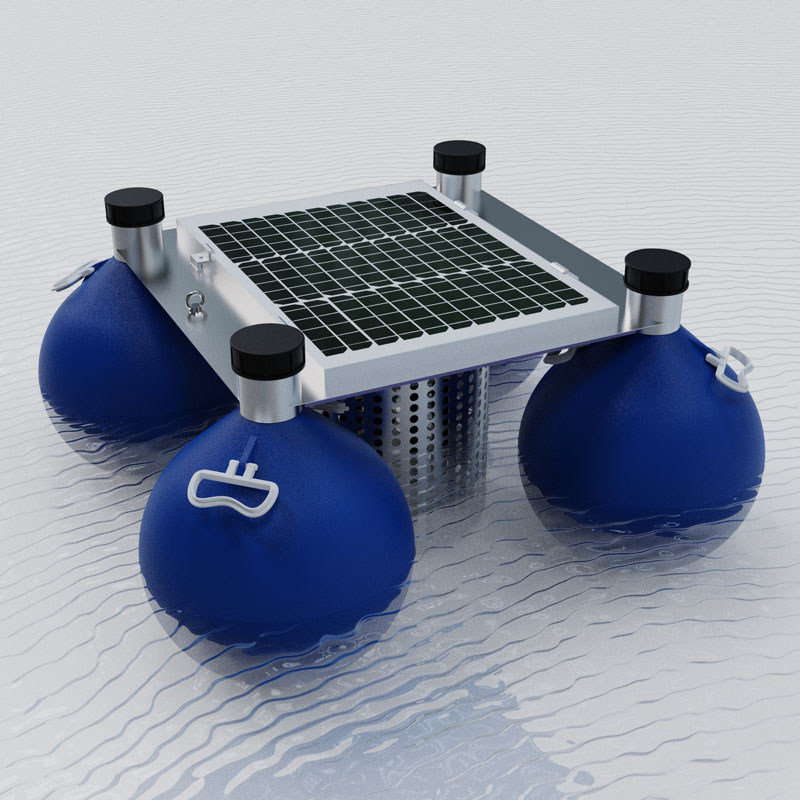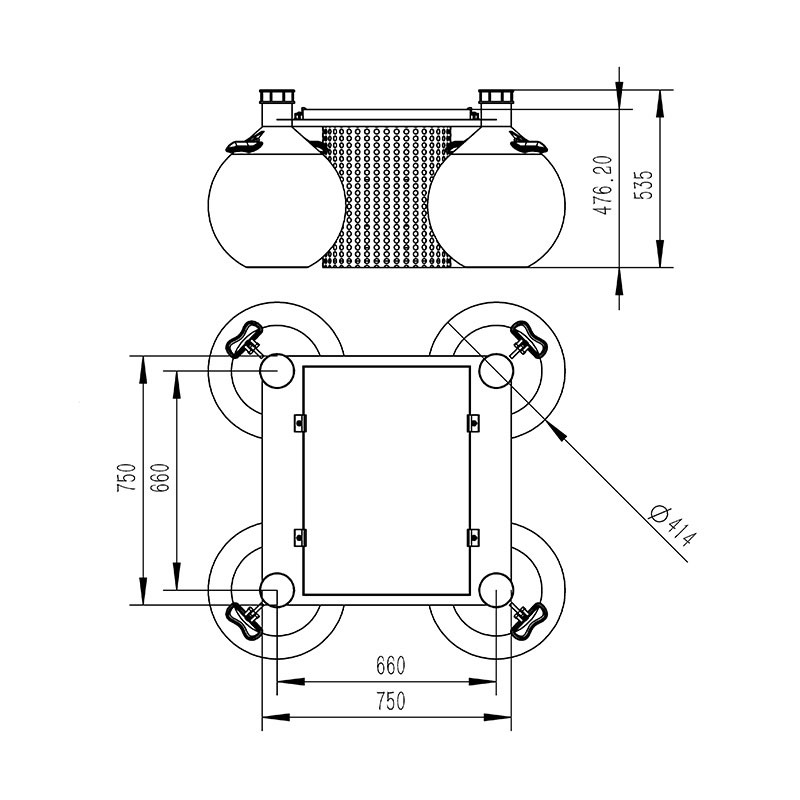Meteorological environment monitoring equipment supplier
Insist on doing high-precision customer favorite technology products

1. Introduction to the functions of Water Monitoring Buoy Systems
Water Monitoring Buoy system integrates various parameter sensors on the buoy and places them in the water body to be monitored.
1.Water quality floating monitoring station SFA is an unattended collection system integrating data collection, storage, transmission and management.It is used as an automatic hydrological forecasting and reporting system for industrial and agricultural production, tourism, urban environment monitoring, geological disasters, flood control, water supply dispatching, power station reservoir water regime management, etc.The powerful host computer software can remotely observe real-time water and rain regime information, with database, Reporting, downloading and other functions, users can also use this well-functioning meteorological software to further process and analyze the recorded data.
2.The SFA04 buoy is composed of six parts: water quality sensor (water temperature, conductivity, PH, dissolved oxygen), data collector, communication system, power supply system, overall bracket, and water quality monitoring platform.At the same time, it can expand a number of water quality factors such as ammonia nitrogen, turbidity, COD and so on.The data collector has data collection, real-time clock, data timing storage, parameter setting and standard 2G/4G (GPRS) communication functions.
2.Product features of Water Monitoring Buoy Systems
1.Easy to deploy: various types of probes are highly integrated and easy to install; free cloud platform services are provided, and the system can be launched quickly;
2.Easy maintenance: After the equipment is installed, it can work by itself without manual supervision.The normal operation of the equipment can also be ensured through remote monitoring;
3.Easy to expand: The sensor probes all use a unified communication protocol, which can quickly connect to the original equipment and quickly expand monitoring parameters;
4.Low power consumption: The device can run for a long time under low power consumption, increasing the convenience of using the device;
5.Real-time: The data monitored by the equipment is transmitted to the cloud platform in real time, improving the timeliness of environmental data feedback.
3.Technical parameters of Water Monitoring Buoy Systems
1.Subject parameters
| Product name | describe |
| Water Monitoring Buoy Systems | Online monitoring of multi-channel parameters can be realized in real time. Can realize battery power monitoring. Can realize cloud platform data monitoring, data push, Data storage and alarm functions; data wireless transmission function. The peak power consumption is 5W; the sensor power consumption is about 0.25W/piece. Overall dimensions: 750mm*750mm*535mm.Float diameter 414mm Weight: 22kg |
| Collector data collection | Reliable operation, anti-interference, and can integrate multiple RS485/MODBUS-RTU slave devices |
| Collector data output | 1 channel Rs485/JSON protocol output |
| Battery | Lithium battery 12VDC, 20AH (default) |
| solar panel | 22.1V/50W (default) |
| Power supply capacity | Customized selection; intermittent work for more than 5 days on rainy days |
| Position indication (optional) | warning light; GPS positioning; |
| Monitoring platform | Cloud platform; mobile phone/computer multi-terminal login |
| protective cover | 304 stainless steel filter cartridge protective cover |
| floating body | Diameter 414mm, spherical floating body*4 engineering plastics |
2.Main parameters of optional sensors
| serial number | name | Measuring range | Measurement principle | Measurement accuracy | Is it standard? | Remark |
| 1 | temperature | 0~50℃ | High-precision digital sensor | ±0.3℃ | ✔ | |
| 2 | pH | 0~14(ph) | Electrochemistry (Salt Bridge) | ±0.1PH | ✔ | |
| 3 | ORP | -1500mv~1500mv | Electrochemistry (Salt Bridge) | ±6mv | ||
| 4 | Conductivity | 0~5000uS/cm | contact electrode method | ±1.5% | ✔ | |
| 5 | Turbidity | 0~40NTU (low turbidity) | scattered light method | ±1% | Low turbidity can be customized | |
| 0~1000NTU (medium turbidity) | scattered light method | ±1% | Medium turbidity can be customized | |||
| 0~3000NTU (high turbidity) | scattered light method | ±1% | Send by default | |||
| 6 | Dissolved oxygen | 0~20mg/L | fluorescence lifetime method | ±2% | ✔ | |
| 7 | Ammonia nitrogen | 0-1000.00mg/L (default) 0-100.00mg/l/ (customizable) | Ion selective electrode method | 10% of reading, ±0.5℃ | ||
| 8 | cod | 0~500mg/L | UV254 absorption method | ±5% | Default hair, cod turbidity integrated | |
| Turbidity | 0~400NTU | scattered light method | ±1% | |||
| 9 | suspended solids | 0~2000mg/L | scattered light method | ±5% (depending on sludge homogeneity) | ||
| 10 | Chlorophyll | 0~400ug/L | Fluorescence method | R2>0.999 |
4.Water Monitoring Buoy Systems Product Dimensions

5.Water Monitoring Buoy Systems equipment installation requirements
1.Stay away from high-power radio transmission sources
2.Stay away from high-voltage power lines and microwave radio transmission channels
3.Try to be as close to the data transmission network as possible
4.Stay away from strong electromagnetic interference
6.Introduction to Water Monitoring Buoy Systems cloud platform
1.CS architecture software platform supports direct observation on mobile phones and PC browsers.No additional software installation is required.
2.Support multiple accounts and multiple devices to log in
3.Support real-time data display and historical data display dashboard
4.Cloud server.Cloud data storage, stable and reliable, easy to expand, and load balanced.
5.Support SMS alarm and threshold setting
6.Support map display and view device information.
7.Support data curve analysis
8.Support data export table format
9.Support data forwarding, HJ-212 protocol, TCP forwarding, http protocol, etc.
10.Support data post-processing function
11.Support external running of javascript scripts